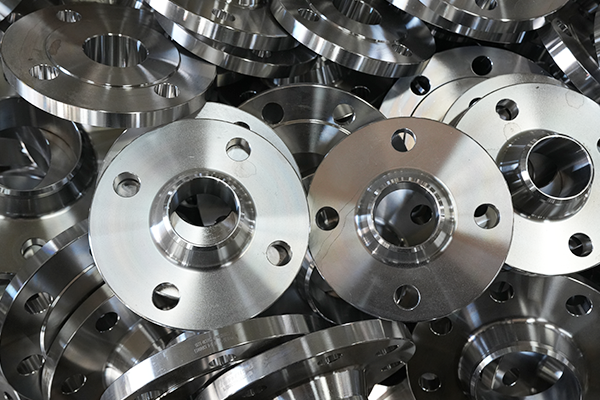NewsDetails
Flange Performance and Mitigation Strategies in High-Temperature Environments
author:Zhantong time:2025-05-23 00:45:32 Click:120
High-temperature applications (e.g., power plants, refineries, chemical reactors) place extreme demands on flanges, leading to risks like creep deformation, gasket degradation, and thermal fatigue. Below is a detailed analysis of performance challenges and proven solutions.
1. Key Challenges in High-Temperature Service
(1) Material Degradation
Carbon steel flanges lose strength above 400°C (750°F) due to graphitization.
Stainless steel (304/316) suffers from carbide precipitation at 500–800°C (930–1470°F), reducing corrosion resistance.
Bolting materials (e.g., ASTM A193 B7) may relax under sustained heat, causing joint loosening.
(2) Gasket Failure
Non-metallic gaskets (e.g., rubber, PTFE) decompose or harden.
Spiral-wound gaskets with graphite filler oxidize above 500°C (930°F).
(3) Thermal Expansion Mismatch
Differential expansion between flanges, bolts, and pipes induces thermal stress, leading to leaks or cracks.
(4) Creep and Stress Relaxation
Metals under constant load slowly deform (creep), while bolts lose clamping force (stress relaxation).
2. Material Selection for High-Temperature Flanges
(1) Flange Materials
Carbon Steel (A105): Limited to ≤425°C (800°F); use A350 LF2 for low-temperature creep resistance.
Alloy Steels (A182 F11/F22): Suitable for 540–600°C (1000–1110°F) in steam service.
Stainless Steels (A182 F304H/F316H): High-carbon grades resist sensitization up to 815°C (1500°F).
Nickel Alloys (Inconel 625, Hastelloy X): For >1000°C (1830°F) in furnaces/reactors.
(2) Bolting Materials
ASTM A193 B7/B7M: For ≤425°C (800°F); B7M is stress-corrosion resistant.
A320 L7/L7M: For cryogenic-to-moderate temperatures.
A286 Stainless Steel: Retains strength up to 650°C (1200°F).
(3) Gasket Materials
Metal-Jacketed Graphite: Withstands 600°C (1110°F) but oxidizes in air.
Flexible Graphite: Stable up to 800°C (1470°F) in inert atmospheres.
RTJ Metal Gaskets (Soft Iron, 316 SS): Best for >800°C (1470°F) with high sealing pressure.
3. Design and Installation Best Practices
(1) Flange Type Selection
Weld Neck Flanges (WN): Optimal for stress distribution in thermal cycling.
RTJ Flanges: Essential for Class 1500+ high-pressure/temperature systems.
(2) Controlled Bolt Tightening
Use hot torqueing (tightening at operating temperature) to compensate for thermal expansion.
Apply disc spring washers to maintain bolt load under creep conditions.
(3) Thermal Insulation & Cooling
Ceramic fiber blankets reduce heat transfer to bolting.
Heat shields protect gaskets from direct radiant heat.
4. Operational Mitigation Strategies
(1) Gradual Heating/Cooling
Avoid thermal shock by limiting temperature ramp rates (e.g., <50°C/hr [90°F/hr]).
(2) Leak Monitoring
Deploy acoustic emission sensors or infrared cameras to detect early leaks.
(3) Scheduled Re-Torquing
Recheck bolt tension after 24–48 hours of operation and annually thereafter.
5. Industry-Specific Applications
Power Plants (Steam Lines): Alloy steel flanges (F22) with RTJ gaskets.
Petrochemical Crackers: Inconel 625 flanges for 1100°C (2010°F) ethylene service.
FCC Units in Refineries: Stainless steel (321H) with flexible graphite gaskets.
6. Emerging Solutions
Smart Flanges: Embedded strain gauges for real-time bolt load monitoring.
Advanced Coatings: Aluminized coatings to protect against oxidation up to 900°C (1650°F).
 Recommended Products
Recommended Products
 Contact us
Contact us
—— Contact:Manager
—— Tel:+86 15231788966
—— Email:info@zhantongpipe.com
—— Url:https://www.zhantongpipe.com
—— Address:Mengcun Hui Autonomous County, Cangzhou City, Hebei Province









